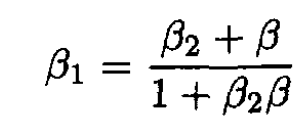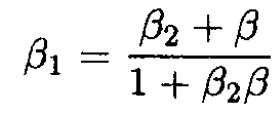
تاريخ الفيزياء

علماء الفيزياء


الفيزياء الكلاسيكية

الميكانيك

الديناميكا الحرارية


الكهربائية والمغناطيسية

الكهربائية

المغناطيسية

الكهرومغناطيسية


علم البصريات

تاريخ علم البصريات

الضوء

مواضيع عامة في علم البصريات

الصوت


الفيزياء الحديثة


النظرية النسبية

النظرية النسبية الخاصة

النظرية النسبية العامة

مواضيع عامة في النظرية النسبية

ميكانيكا الكم

الفيزياء الذرية

الفيزياء الجزيئية


الفيزياء النووية

مواضيع عامة في الفيزياء النووية

النشاط الاشعاعي


فيزياء الحالة الصلبة

الموصلات

أشباه الموصلات

العوازل

مواضيع عامة في الفيزياء الصلبة

فيزياء الجوامد


الليزر

أنواع الليزر

بعض تطبيقات الليزر

مواضيع عامة في الليزر


علم الفلك

تاريخ وعلماء علم الفلك

الثقوب السوداء


المجموعة الشمسية

الشمس

كوكب عطارد

كوكب الزهرة

كوكب الأرض

كوكب المريخ

كوكب المشتري

كوكب زحل

كوكب أورانوس

كوكب نبتون

كوكب بلوتو

القمر

كواكب ومواضيع اخرى

مواضيع عامة في علم الفلك

النجوم

البلازما

الألكترونيات

خواص المادة


الطاقة البديلة

الطاقة الشمسية

مواضيع عامة في الطاقة البديلة

المد والجزر

فيزياء الجسيمات


الفيزياء والعلوم الأخرى

الفيزياء الكيميائية

الفيزياء الرياضية

الفيزياء الحيوية

الفيزياء العامة


مواضيع عامة في الفيزياء

تجارب فيزيائية

مصطلحات وتعاريف فيزيائية

وحدات القياس الفيزيائية

طرائف الفيزياء

مواضيع اخرى
Rapidity
المؤلف:
Sidney B. Cahn And Boris E. Nadgorny
المصدر:
A GUIDE TO PHYSICS PROBLEMS
الجزء والصفحة:
part 1 , p 36
13-7-2016
1643
Rapidity
a) Consider two successive Lorentz transformations of the three frames of reference K0, K1, K2. K1 moves parallel to the x axis of K0 with velocity v, as does K2 with respect to K1. Given an object moving in the x direction with velocity v2 in K2 derive the formula for the transformation of its velocity from K2 to K0.
b) Now consider n+1 frames moving with the same velocity v relative to one another (see Figure 1.1). Derive the formula for a Lorentz transformation from Kn to K0 if the velocity of the object in Kn is also v.

Figure 1.1
Hint: You may want to use the definition of rapidity or velocity parameter, tanh ψ = β, where β = v/c.
SOLUTION
a) The velocity of the particle moving in frame K1 with velocity v2 in the frame K1 is given by a standard formula:

Introducing βi = vi/c we may rewrite this formula in the form
 (1)
(1)
Now the same formula may be written for a transformation from K1 to K0:
 (2)
(2)
Now substituting (1) into (2), we obtain

b) If we need to make a transformation for n-frames, it is difficult to obtain a formula using the approach in (a). Instead, we use the idea of rapidity, ѱ. Indeed for one frame, we had in (1)

which is the formula for the tanh of a sum of arguments

where tanh ѱi = βi. This means that the consecutive Lorentz transformations are equivalent to adding rapidities. So the velocity in the frame K0 after n transformations (if vn+1 = v ) will be given by

We can check that if n → ∞, then βi → 1.
 الاكثر قراءة في مواضيع اخرى
الاكثر قراءة في مواضيع اخرى
 اخر الاخبار
اخر الاخبار
اخبار العتبة العباسية المقدسة

الآخبار الصحية















 قسم الشؤون الفكرية يصدر كتاباً يوثق تاريخ السدانة في العتبة العباسية المقدسة
قسم الشؤون الفكرية يصدر كتاباً يوثق تاريخ السدانة في العتبة العباسية المقدسة "المهمة".. إصدار قصصي يوثّق القصص الفائزة في مسابقة فتوى الدفاع المقدسة للقصة القصيرة
"المهمة".. إصدار قصصي يوثّق القصص الفائزة في مسابقة فتوى الدفاع المقدسة للقصة القصيرة (نوافذ).. إصدار أدبي يوثق القصص الفائزة في مسابقة الإمام العسكري (عليه السلام)
(نوافذ).. إصدار أدبي يوثق القصص الفائزة في مسابقة الإمام العسكري (عليه السلام)


















